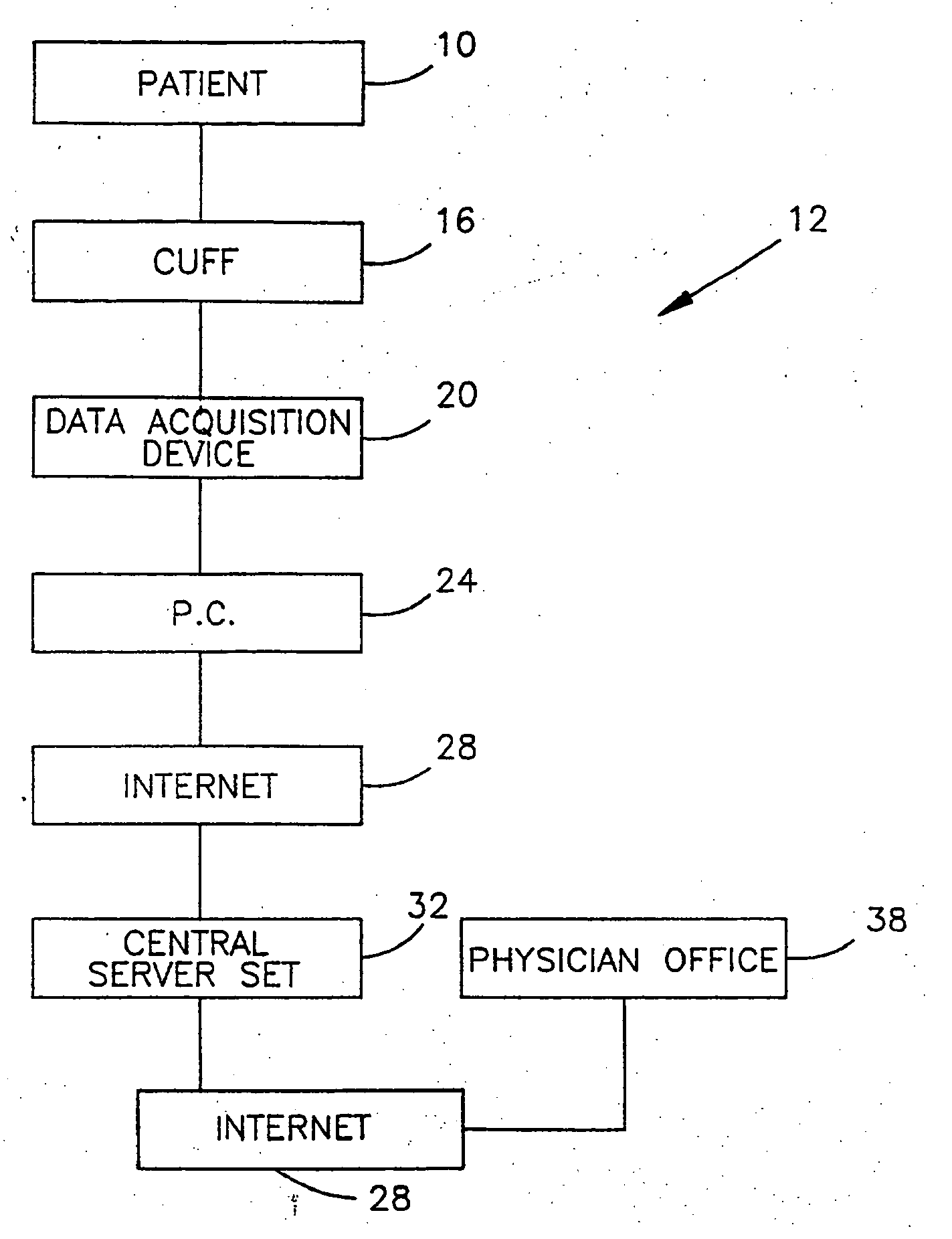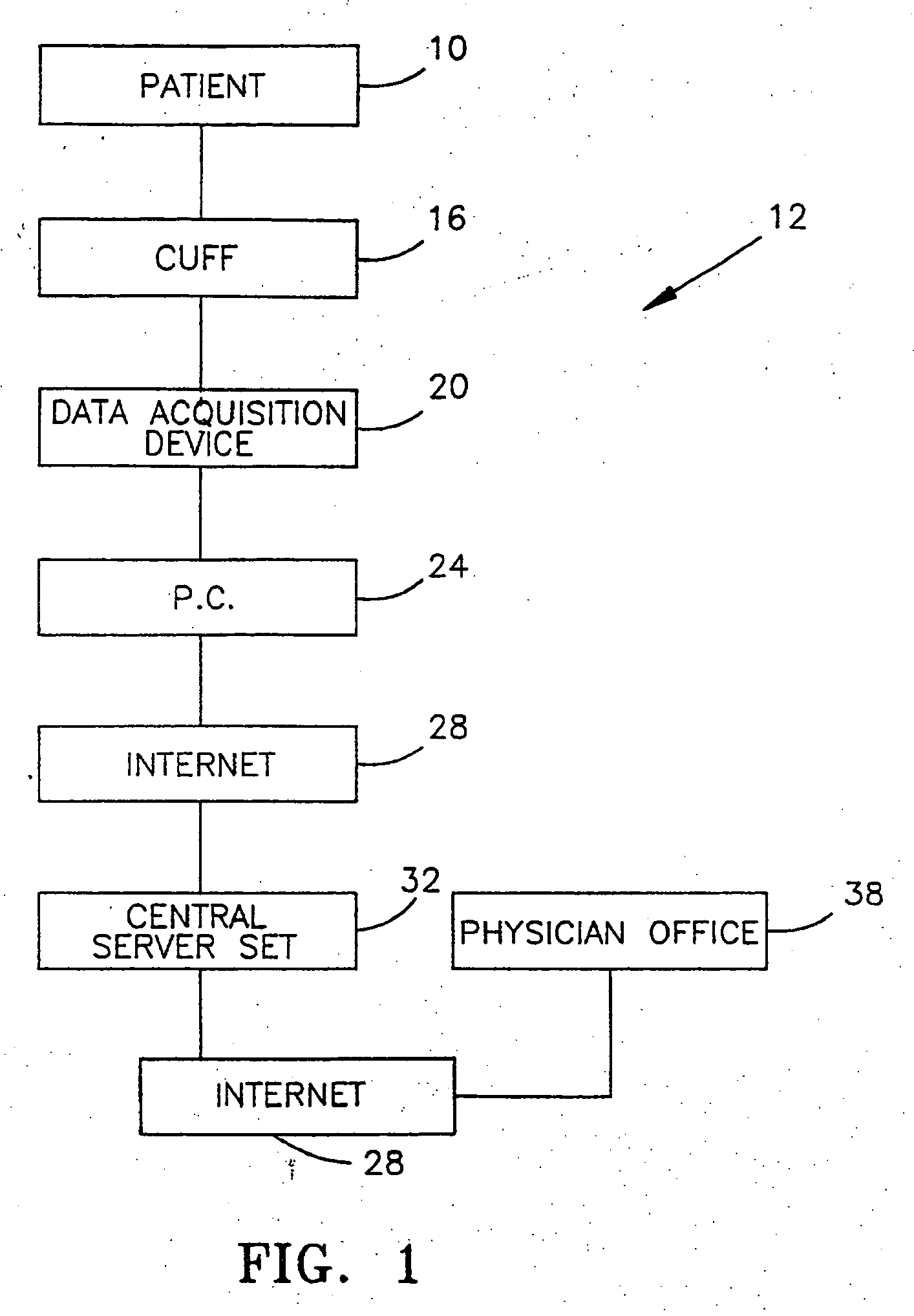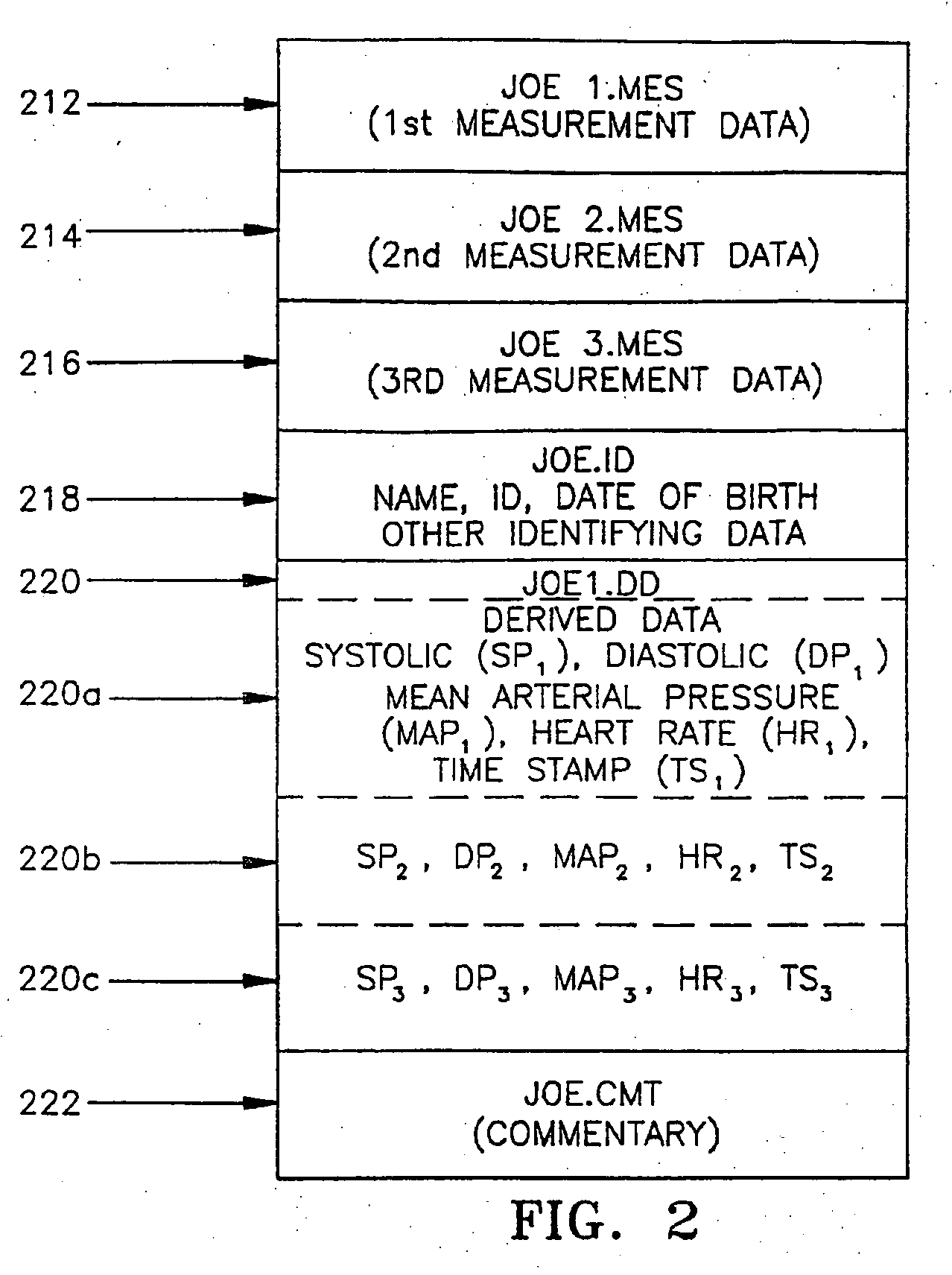Hemodynamic analysis device and method
a hemodynamic analysis and device technology, applied in the field of health condition monitoring, can solve the problems of difficult patient care, difficult patient care, and difficulty in monitoring hemodynamic parameters of patients, and achieve the effects of convenient and hence cost-effective treatment, more data points, and improved patient car
- Summary
- Abstract
- Description
- Claims
- Application Information
AI Technical Summary
Benefits of technology
Problems solved by technology
Method used
Image
Examples
Embodiment Construction
[0025] A flow of information starts at the patient 10 (FIG. 1), where he / she employs a data acquisition device 20 that records arterial wave forms for the patient when the patient's blood pressure is being taken. An example of such a device is the DYNAPULSE® Blood Pressure Monitoring device that is manufactured and sold by Pulse Metric®, Inc., of 11777 Sorrento Valley Drive, San Diego, Calif. USA 92121, the assignee of the present invention, and which is described in more detail in Chio U.S. Pat. No. 4,880,013, issued 14 Nov. 1989, and is discussed further within www.pulsemetric.com and / or www.dynapulse.com; and Chio U.S. Pat. Nos. 5,162,991 and 5,836,884 and Chio and Brinton U.S. Pat. No. 5,879,307. The Dynapulse® device and the disclosures of the Chio, and Chio and Brinton references are hereby incorporated herein by reference. The DYNAPULSE® device includes a conventional, inflatable blood pressure cuff 16 having an audio output tube that is coupled to a data acquisition device 2...
PUM
 Login to View More
Login to View More Abstract
Description
Claims
Application Information
 Login to View More
Login to View More - R&D
- Intellectual Property
- Life Sciences
- Materials
- Tech Scout
- Unparalleled Data Quality
- Higher Quality Content
- 60% Fewer Hallucinations
Browse by: Latest US Patents, China's latest patents, Technical Efficacy Thesaurus, Application Domain, Technology Topic, Popular Technical Reports.
© 2025 PatSnap. All rights reserved.Legal|Privacy policy|Modern Slavery Act Transparency Statement|Sitemap|About US| Contact US: help@patsnap.com



